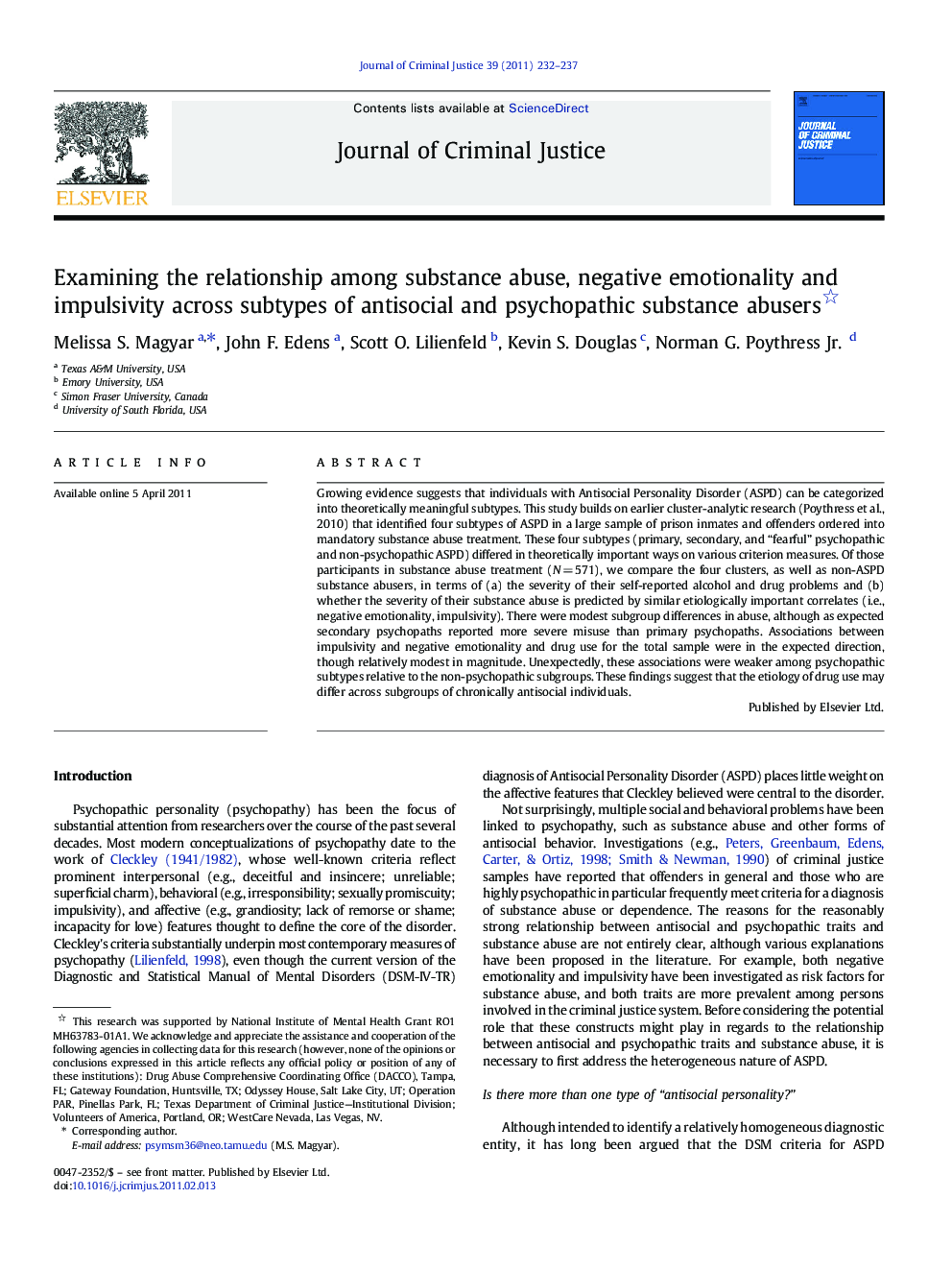| کد مقاله | کد نشریه | سال انتشار | مقاله انگلیسی | نسخه تمام متن |
|---|---|---|---|---|
| 882881 | 912032 | 2011 | 6 صفحه PDF | دانلود رایگان |

Growing evidence suggests that individuals with Antisocial Personality Disorder (ASPD) can be categorized into theoretically meaningful subtypes. This study builds on earlier cluster-analytic research (Poythress et al., 2010) that identified four subtypes of ASPD in a large sample of prison inmates and offenders ordered into mandatory substance abuse treatment. These four subtypes (primary, secondary, and “fearful” psychopathic and non-psychopathic ASPD) differed in theoretically important ways on various criterion measures. Of those participants in substance abuse treatment (N = 571), we compare the four clusters, as well as non-ASPD substance abusers, in terms of (a) the severity of their self-reported alcohol and drug problems and (b) whether the severity of their substance abuse is predicted by similar etiologically important correlates (i.e., negative emotionality, impulsivity). There were modest subgroup differences in abuse, although as expected secondary psychopaths reported more severe misuse than primary psychopaths. Associations between impulsivity and negative emotionality and drug use for the total sample were in the expected direction, though relatively modest in magnitude. Unexpectedly, these associations were weaker among psychopathic subtypes relative to the non-psychopathic subgroups. These findings suggest that the etiology of drug use may differ across subgroups of chronically antisocial individuals.
Research highlights
► Secondary psychopathy is more strongly related to substance problems than primary psychopathy.
► The relationship between substance use and negative emotions is stronger among non-psychopaths.
► The etiology of substance abuse may differ for psychopathic versus nonpsychopathic offenders.
Journal: Journal of Criminal Justice - Volume 39, Issue 3, May–June 2011, Pages 232–237